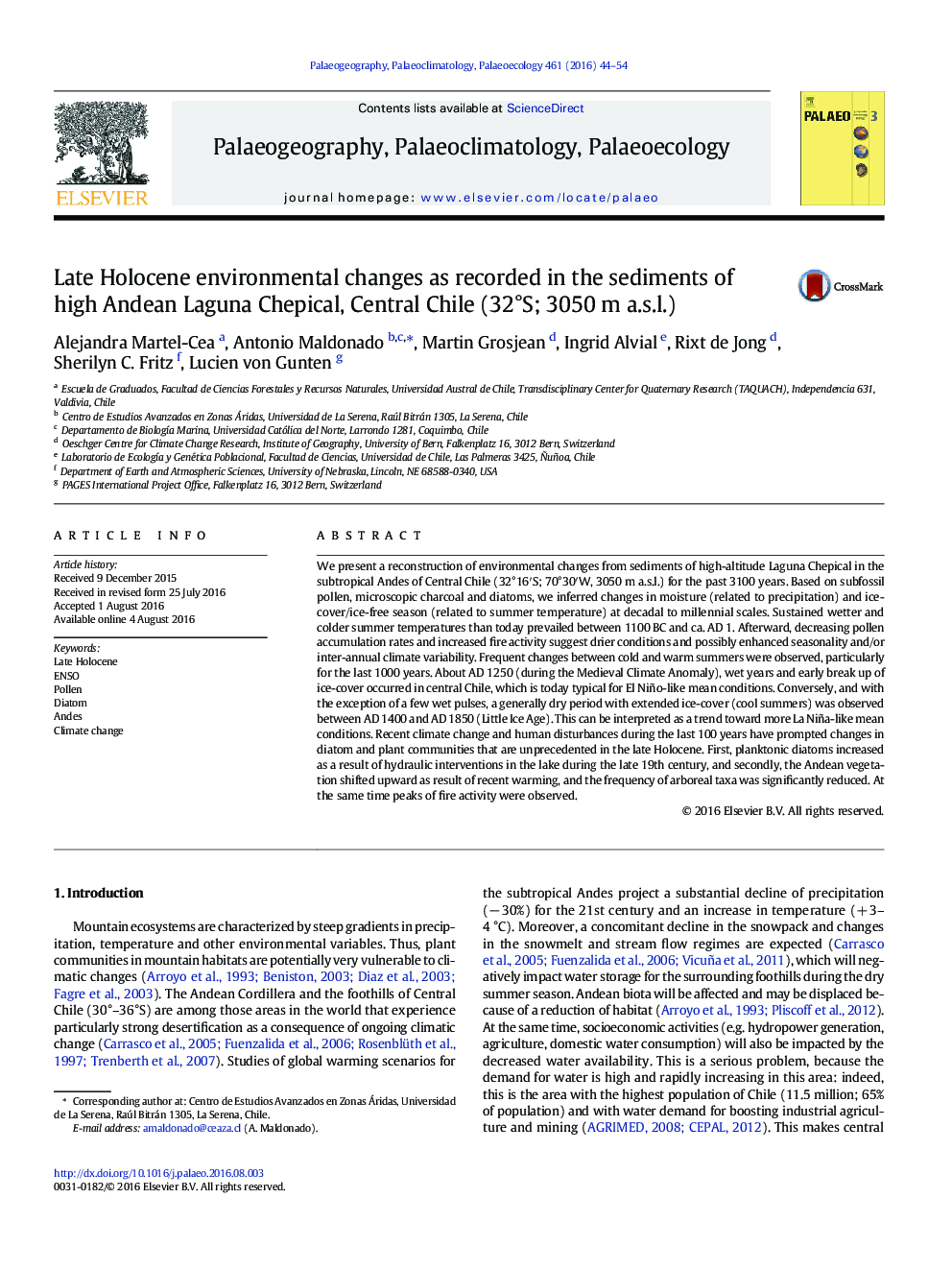| کد مقاله | کد نشریه | سال انتشار | مقاله انگلیسی | نسخه تمام متن |
|---|---|---|---|---|
| 4465520 | 1622130 | 2016 | 11 صفحه PDF | دانلود رایگان |
• Pollen, diatoms and micro-charcoal records from a mountain lake in the subtropical Andes.
• Late Holocene environmental changes related to precipitation and ice-cover dynamics.
• ENSO activity influenced climate variability of the last 2000 years.
• Severe anthropogenic disturbances of the diatom and terrestrial flora communities were recorded during the past 150 years.
We present a reconstruction of environmental changes from sediments of high-altitude Laguna Chepical in the subtropical Andes of Central Chile (32°16′S; 70°30′W, 3050 m a.s.l.) for the past 3100 years. Based on subfossil pollen, microscopic charcoal and diatoms, we inferred changes in moisture (related to precipitation) and ice-cover/ice-free season (related to summer temperature) at decadal to millennial scales. Sustained wetter and colder summer temperatures than today prevailed between 1100 BC and ca. AD 1. Afterward, decreasing pollen accumulation rates and increased fire activity suggest drier conditions and possibly enhanced seasonality and/or inter-annual climate variability. Frequent changes between cold and warm summers were observed, particularly for the last 1000 years. About AD 1250 (during the Medieval Climate Anomaly), wet years and early break up of ice-cover occurred in central Chile, which is today typical for El Niño-like mean conditions. Conversely, and with the exception of a few wet pulses, a generally dry period with extended ice-cover (cool summers) was observed between AD 1400 and AD 1850 (Little Ice Age). This can be interpreted as a trend toward more La Niña-like mean conditions. Recent climate change and human disturbances during the last 100 years have prompted changes in diatom and plant communities that are unprecedented in the late Holocene. First, planktonic diatoms increased as a result of hydraulic interventions in the lake during the late 19th century, and secondly, the Andean vegetation shifted upward as result of recent warming, and the frequency of arboreal taxa was significantly reduced. At the same time peaks of fire activity were observed.
Journal: Palaeogeography, Palaeoclimatology, Palaeoecology - Volume 461, 1 November 2016, Pages 44–54
